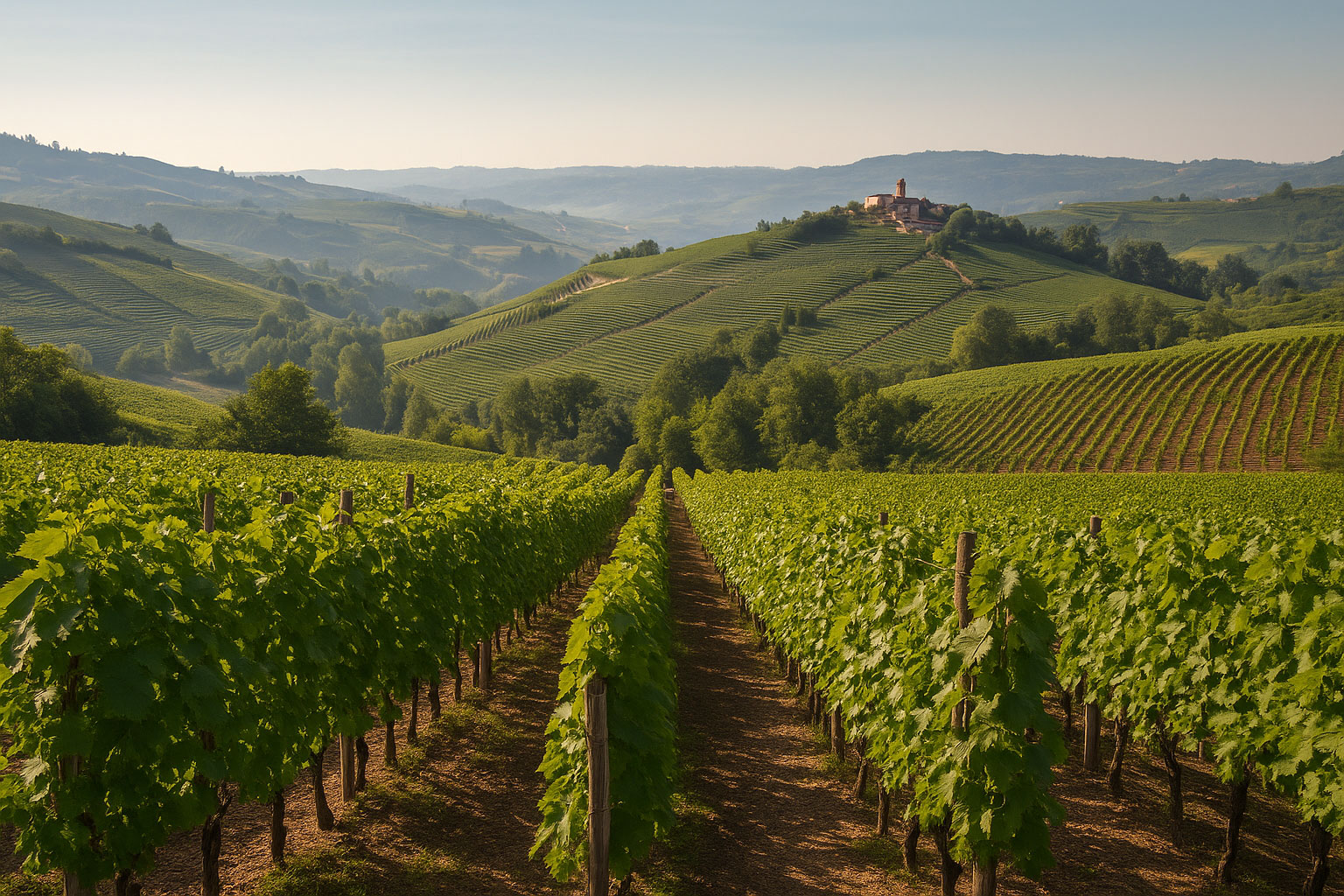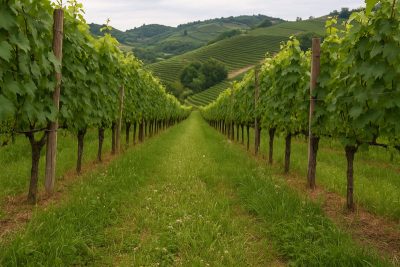-
Canopy Management
- » DF Pneumatic Leaf Remover
- » C-305 Independent Hydraulic Power Unit
- » CM-FF – Orchard Topper
- » CM-SF – Synchronized Bar Mower Topper
- » CM-SD – Synchronized Double Topping Machine
- » CM-SDT – Simple Synchronized Double Topping Machine
- » CM-SNU – Over-the-Row Topping Machine
- » CM-SNE – Electric and Hybrid Synchronized Topping Machine
- » CM-B – Basic Topping Machine
- » CM-SN New Model Synchronized Topping Machine
- » CM-S Synchronized Topping Machine
Sustainable Winegrowing 2025: Innovative Agronomic Strategies

In 2025, sustainable viticulture is an increasing priority for Italian companies, standing at the crossroads of tradition and innovation. The challenges posed by climate change, environmental sustainability, and new market demands are pushing agricultural businesses toward adopting advanced agronomic strategies. This article examines emerging trends in vineyard management in Italy, highlighting how technology, sustainability, and training integrate to ensure a resilient and competitive future for the sector.
Adapting to Climate Change: New Frontiers in Viticulture
Genetic Improvement and Selection of Resilient Grape Varieties
With rising temperatures and increasing climate variability, it’s essential to rethink the cultivated varieties. Researchers like Attilio Scienza suggest focusing on resilient grape varieties, selected for their tolerance to water and heat stress. In Italy, genetic improvement projects are giving rise to new varieties suitable for the future climate while maintaining traditional organoleptic characteristics.
Sustainable Water Resource Management
Water management is crucial. The adoption of soil sensors, weather stations, and drip irrigation systems allows for the rationalization of water use, reducing waste and water stress. In regions like Piedmont, precision irrigation strategies are becoming increasingly common, especially in prestigious vineyards such as those of Barolo and Barbaresco.
Emerging Technologies at the Service of Viticulture
On the path toward sustainable viticulture, emerging technologies offer decisive tools to improve vineyard efficiency and resilience.
Precision Agriculture and Sensor Technology
Precision agriculture applied to vineyards allows for real-time data collection on humidity, plant health, and soil composition. This data, integrated into management platforms, enables targeted and timely interventions, reducing costs and improving qualitative yield.
Robotics and Automation
European projects like VINUM are experimenting with autonomous quadruped robots for pruning and monitoring. In a context of skilled labor scarcity, robotics represents concrete support for medium and large-sized wine companies.
Agronomic Practices: Towards Sustainable Viticulture
Cover Cropping, Green Manure, and Soil Biodiversity

Agronomic techniques such as controlled cover cropping and green manure improve soil structure, increase water retention, and promote biodiversity. The European project SOil4WINE has demonstrated how these practices reduce erosion and promote long-term vineyard health. (You might be interested in: “Vineyard cover cropping: choosing plant species as a climate change strategy”)
Planting Density and Grape Quality
An often underestimated but fundamental aspect of sustainable viticulture concerns the planting density of the vineyard. The distance between rows and the number of vines per hectare directly influence grape quality, agronomic management, and the balance between vegetative vigor and yield. (You might be interested in: “Vineyard planting: when grape quality is a matter of space”)
Reducing the Use of Plant Protection Products
The adoption of integrated strategies, such as biological control and the use of resistant varieties, drastically reduces the use of pesticides. This approach not only improves sustainability but also increases the perceived value of the final product.
Energy Innovations: Agrivoltaics in Viticulture
The adoption of innovative energy solutions aligns with the principles of sustainable viticulture, contributing to the sector’s ecological transition. Agrivoltaics involves integrating photovoltaic panels above crops. This practice, already tested in some companies in Southern Italy, reduces evaporation, generates renewable energy, and improves the vineyard’s climate resilience. The potential of this technology is particularly relevant for hillside vineyards with optimal exposure.
Training and Collaboration: Pillars for Innovation
The evolution of techniques requires new skills. Training programs like the Wine Business Program 2025, promoted by Italian universities and wine consortia, foster knowledge transfer between research and business. Collaborations between companies and research centers are becoming fundamental to maintain international competitiveness.
Conclusion
Sustainable viticulture is no longer an optional choice but an obligatory direction to address the environmental and productive challenges of our time. Innovative agronomic strategies, respect for the environment, technological integration, and training represent the four pillars of a winning model. Events like Vinum in Alba testify to the industry’s dynamism and commitment to a high-quality, resilient, and sustainable wine future.
Sources and Further Reading
- AgroNotizie. “Climate change and viticulture must be rethought, from the foundations.” March 27, 2025.
- AgroNotizie. “Viticulture, technicians and companies take stock at Vigna & Olivo 2025.” March 19, 2025.
- TeamSystem. “Technologies in the wine industry: 5 top trends of 2025.” March 12, 2025.
- Canale Vino. “Wine Business Program 2025.” April 9, 2025.
The images in this article were generated with ChatGPT – DALL·E (OpenAI).

